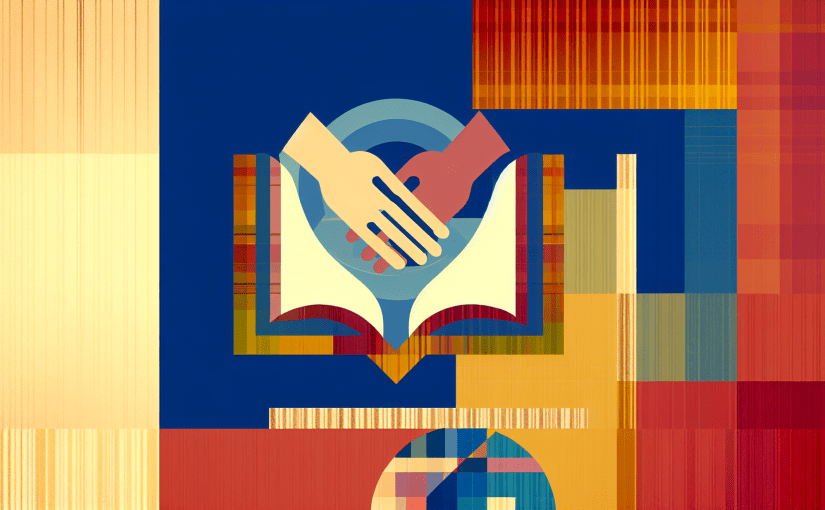Catholicism and LGBTQ Issues: Bridging Tradition and Inclusion
In recent years, the intersection of Catholicism and LGBTQ issues has sparked significant discussion and debate within the Church. This topic resonates not only within theological circles but also within wider societal conversations about inclusion, acceptance, and the evolving understanding of sexuality and gender identity. This blog post explores the complexities of Catholic teachings on LGBTQ matters, the varying perspectives within the Church, and the growing movement towards inclusivity.
Understanding Catholic Teachings on Sexuality
Catholicism has a rich and complex history regarding human sexuality and relationships. The Church’s teachings are rooted in scripture and tradition, emphasizing the sanctity of marriage as a union between one man and one woman. The Catechism of the Catholic Church states that “homosexual acts are intrinsically disordered” but differentiates between orientation and behavior, asserting that individuals with same-sex attractions must be treated with respect and sensitivity.
This dichotomy presents challenges for many LGBTQ Catholics who seek to reconcile their faith with their identity. The Church’s stance on homosexuality has led to feelings of exclusion and misunderstanding among LGBTQ individuals, making it a critical area of discussion within Catholic communities.
Historical Context of Catholicism and LGBTQ Issues
Historically, the relationship between Catholicism and LGBTQ issues has been fraught with tension. Over the centuries, various popes and church leaders have issued statements affirming traditional views on sexuality, often condemning homosexual behavior. However, there have also been voices within the Church advocating for a more compassionate approach.
In the late 20th century and into the 21st century, societal shifts regarding LGBTQ rights began to influence Catholic perspectives. The increasing visibility of LGBTQ individuals and the push for equal rights have prompted many Catholics to reconsider long-standing beliefs about sexuality and orientation.
The Evolving Conversation within the Church
The dialogue surrounding Catholicism and LGBTQ issues has evolved significantly in recent years. Pope Francis, known for his more approachable and inclusive demeanor, has emphasized the importance of pastoral care for LGBTQ individuals. In 2016, he famously stated, “If someone is gay and he searches for the Lord and has good will, who am I to judge?” This statement signaled a potential shift in the Church’s attitude towards LGBTQ individuals and offered hope for greater acceptance.
Each diocese, however, has its own approach, and reactions can vary widely. Some congregations are more welcoming, establishing LGBTQ ministries and affirming practices, while others maintain stricter adherence to traditional teachings. This variance indicates a broader conversation within the Church as members grapple with how to uphold doctrine while fostering inclusion.
The LGBTQ Catholic Movement
The emergence of LGBTQ Catholic organizations reflects a growing movement within the Church advocating for affirmation and acceptance. Groups like DignityUSA, New Ways Ministry, and others work to create a safe space for LGBTQ Catholics. These organizations are crucial in promoting dialogue, providing support, and challenging traditional teachings that may be exclusionary.
Events such as Pride Masses and LGBTQ retreats have also gained popularity, providing LGBTQ Catholics with opportunities to connect with their faith in an affirming environment. The need for community and belonging is powerful, and these initiatives help bridge the gap between faith and identity.
Case Studies: Acceptance and Inclusion in Action
The Archdiocese of San Francisco
One notable example of a progressive approach can be found in the Archdiocese of San Francisco. Under the leadership of Archbishop Salvatore Cordileone, there has been a concerted effort to engage with the LGBTQ community. The archdiocese has supported LGBTQ-inclusive events and messaging, fostering a sense of belonging within the Church.
The Global Perspective
Globally, the response to LGBTQ issues within Catholicism varies greatly. In regions like the United States and Western Europe, there is an expanding dialogue about inclusion. However, in many African and Eastern European countries, the Church maintains strict adherence to traditional teachings, often resulting in anti-LGBTQ sentiments and a lack of support for LGBTQ individuals.
The Role of Theology in the LGBTQ Discourse
The theological discourse surrounding LGBTQ issues in Catholicism continues to grow. Theologians and scholars are examining scriptural interpretations and the historical context of Church teachings. For instance, many argue that the biblical texts commonly cited against homosexuality have been misinterpreted and should be understood within their historical context.
Progressive theologians advocate for a reexamination of traditional teachings, emphasizing love and inclusion as central tenets of the faith. This theological shift can help create a more welcoming environment for LGBTQ individuals within the Church.
Engaging in Dialogue: Finding Common Ground
Amid differing perspectives, engaging in respectful dialogue remains essential in addressing Catholicism and LGBTQ issues. It is crucial for both LGBTQ advocates and traditionalists to find common ground based on shared values such as love, dignity, and respect. Open conversations can lead to greater understanding and help bridge the divide that often separates these groups.
Encouraging Catholic communities to foster environments of compassion and acceptance is vital. This can involve education, workshops, and pastoral outreach to help dispel myths and promote a deeper understanding of LGBTQ issues.
Challenges Ahead: Resistance and Reform
As the conversation around Catholicism and LGBTQ issues evolves, challenges remain. Resistance to change persists within certain sectors of the Church, leading to ongoing struggles for LGBTQ inclusion. Some church leaders maintain traditional views, often invoking scripture to justify their stance. This resistance can create a hostile environment for LGBTQ individuals seeking acceptance within their faith.
Reform within the Church is possible, but it requires persistent advocacy and visible support for LGBTQ rights. It is essential for allies within the Church to continue pushing for change while fostering open dialogues that respect diverse opinions.
Conclusion: Towards a Hopeful Future
The relationship between Catholicism and LGBTQ issues is multifaceted and evolving. As conversations continue and new voices emerge, the possibility for greater acceptance and inclusion becomes more tangible. Catholic communities are increasingly recognizing the importance of embracing diversity and fostering a spirit of love and compassion.
By engaging in meaningful dialogue, advocating for inclusive practices, and reexamining theological perspectives, the Catholic Church can move toward a future where LGBTQ individuals are welcomed and affirmed as integral members of the faith community. The journey towards reconciliation is ongoing, but with commitment, compassion, and understanding, there is hope for a more inclusive Catholic Church that honors the dignity of all its members.
As this conversation continues to unfold, it is incumbent upon both LGBTQ individuals and their allies within the Church to work toward a culture of acceptance and love, rooted in the core tenets of Catholic teachings. The future of Catholicism and LGBTQ issues lies in our collective hands.




